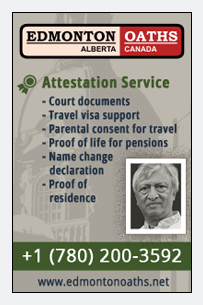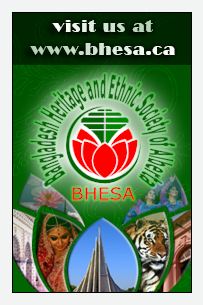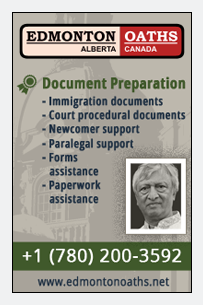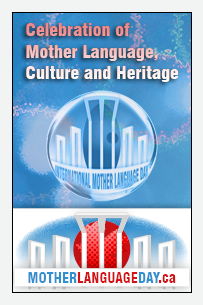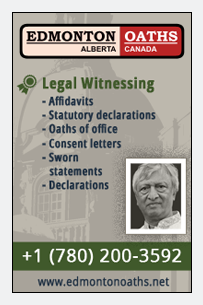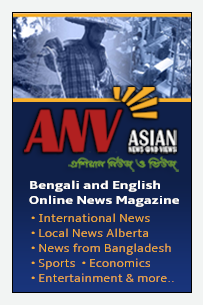Requirements not met
Your browser does not meet the minimum requirements of this website. Though you can continue browsing, some features may not be available to you.
Browser unsupported
Please note that our site has been optimized for a modern browser environment. You are using »an unsupported or outdated software«. We recommend that you perform a free upgrade to any of the following alternatives:
Using a browser that does not meet the minimum requirements for this site will likely cause portions of the site not to function properly.
Your browser either has JavaScript turned off or does not support JavaScript.
If you are unsure how to enable JavaScript in your browser, please visit wikiHow's »How to Turn on Javascript in Internet Browsers«.
Samajkantha News is a sister media of Doinik Ekattorer Chetona.
Language / ভাষা:
Open Discussion
Cultural Heritage of Bangladesh
- Details
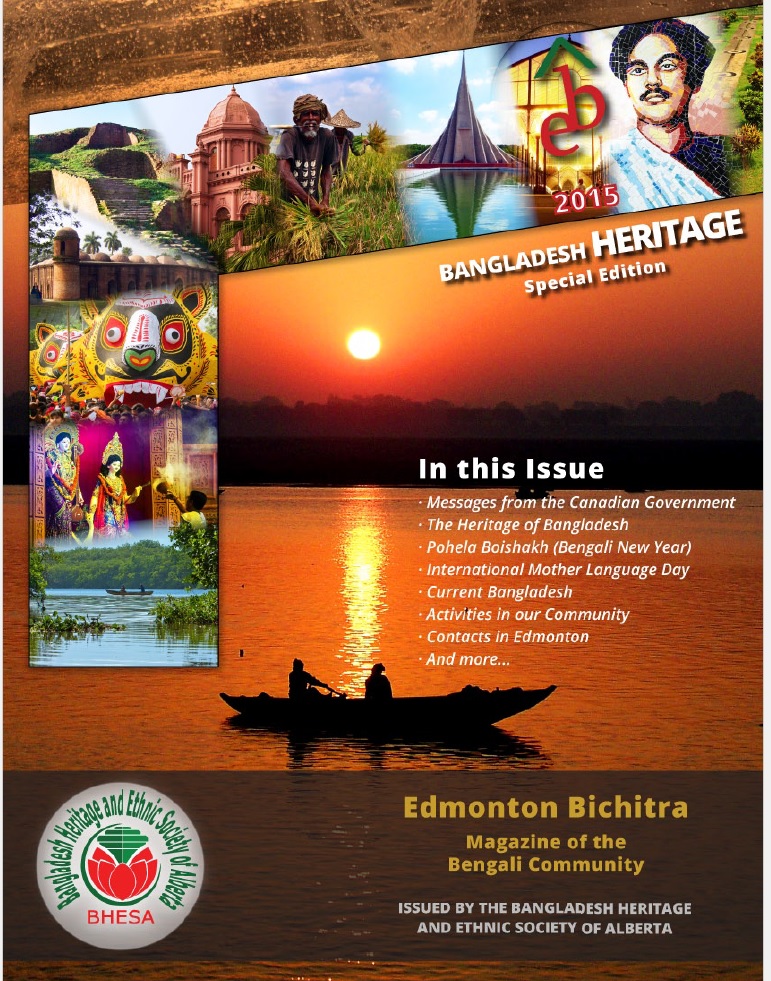 Cultural Heritage of Bangladesh
Cultural Heritage of Bangladesh
by
Dr. M. Kamrul Hasan
Joint Director, Rural Education and Social Development, BARD
Introduction
Bengal is the largest delta in the world. The history of Bangladesh is old.
Bangladesh is an young state but is the home of an old civilization various races and
tribes settled and assimilated with the local population
. General mass people of Bangladesh are generally simple but artistic. This country
is land of folk culture and heritage. They are known as Bengali having rich and colorful
cultural heritages in the world.
In the earliest period Bengal was known to be inhabited by different groups of
people, whose names came to be associated with the area inhabited by them. Thus the
ancient Janapadas of Vanga, Pundra, Radha, Samatata, Horikel, Gauda and others came
to be recognized as inhabited by non-Aryan ethnic groups bearing those names. The pre-
Aryan elements in the culture of the people of Bengal got time to become deeply rooted
and even under Aryan influence. Persons of Arab, Persian, and Middle Asian origin
those had Islamic values moved in Bengal in early 11th century A.D.
Vast majority of Bengali people is living in Bangladesh. Moreover, there are several
ethnic communities inhabited at Chittagong Hill Tracts and other parts of Bangladesh
such as Greater Rajshahi, Mymensing, Sylhet and other areas. The total population of
tribal ethnic minorities in Bangladesh was estimated to be over 2 million in 20101. The
citizen of Bangladesh known as both Bengali and Bangladeshi.
In a broad sense, culture as way of life. Culture refers to the customary patterns of
behavior and shared values, beliefs, and assumption found within social groups. Social
groups may be differentiated from each other by their livelihood, differing attitudes,
beliefs, language, dress, manners, tastes in food, music or interior decoration, and host of
other features which compromise a way of life.
1 http://en.wikipedia.org/wiki/Indigenous_peoples_in_Bangladesh
Culture is overall way of ornamentation of human living from art-literature to life
styles. Culture means living nicely and it has diversity. Culture and identity strongly
bonded each other. Culture describes the many ways in which human beings express
themselves for the purposes of uniting with others, forming a group, defining an identity,
and even for distinguishing themselves as unique. According to sociologist Pritirim
Sorokin (1937) culture is the “sum total of everything which is created or modified by the
conscious and unconscious activity of two or more individuals interacting, with one
another or conditioning one another behaviors”. Culture, civilization, and patterns of
education produce diverse cultural mentalities across the world. Anthropologist E.B.
Tylor2 (1871), defines “Culture…. is that complex whole which includes knowledge,
belief, art, morals, law, custom, and any other capabilities and habits acquired by man as
a member of society.’’ The key expression here is “acquired by men as a member of
Bengal known as cultural diversity. From ancient period of time the foundation of
culture developed here through agriculture production organizations, agriculture
civilization, humanistic folk traditions, trade and commerce, limited urban centers,
political organizations and etc. Early settlers, immigrants and invaders conflict over
cultures and political organizations from time immemorial and that eventually
synchronized the culture of Bangladesh. However, Bengal or Bangladesh known as
nearly self sufficient village community in the past in social history.
The spiritual humanism one of the core of folklore of Bangladesh. At the same time,
general people have integrated mind. It was reflected in the Bengali literatures
particularly of the sixteenth century and onwards. For example poet Abdul Hakim’s Nur-
Allah Khoda Gasain Sakal tar naam,
Sarba goone niranjan pravu goonadham
(Allah Khuda Gasain all bear the same name of the Great Lord who is the repository
of all noble virtues)3.
2 His famous book is Primitive Culture which published in 1871.
3 Ahmed, A F Salahuddin. 2004. Bangladesh History and Culture - An overview. In Bangladesh national
culture and heritage, Dhaka: Independent University of Bangladesh.
In ancient, Bengal known as Gauda. The Banga or Vanga named as Shahi-i-
Bangala in Sultani (Pathan era) period of sultans Fakhurddin Mubarak Shah and
Shamsuddin Ilyas Shah. In Mughul period it was called as Bangla Suba. In 1905 Bengal
divided and Eastern Bengal and Assam province was formed. In 1911 Bengal reunified.
Again second partition of Bengal took placed in 1947. The territory of East Bengal (the
then East Pakistan) emerged as the People’s Republic of Bangladesh through liberation
war of Bangladesh in 1971. The spirit of liberation is the foundation of Bangladesh.
Bangladesh War of Independence, or Liberation War in Bangladesh great historical
moment in Bangladesh history. The Bangladeshi Declaration of Independence was issued
in response to the crackdown by Pakistani occupational forces. The liberation war lasted
for nine months, with the Mukti Bahini successfully managing to restrict Pakistani forces
to their barracks at night by November. India joined the war on 3 December 1971, after
Pakistan launched air strikes on North India.
Several distinct elements have contributed to the making of the cultural heritage
of the people of Bangladesh, namely
a) Pre Aryan period settlements
b) Self sufficient village community
c) Hindu and Buddhism
d) Sufism and Islamic
e) Cultural identity of tribal people of the land
f) Western or European
g) Synthesis of traditions and modernity under globalization process
Establishment of Dhaka University in 1921 was significant and Shikha Goushti
commenced on cultural movement on free thinking. Bengali middle class took the lead
for cultural emancipation. It was Language movement 1948-52 sparked our mind to be
flourished through our Bengali language and culture. Our language movement has
created enormous impact on culture. Political movements, cultural movements from
progressive and left wing forces, education movement, oppression and discrimination in
economic and social sectors by the West Pakistani rulers, six points movement, eleven
points movements, mass movement, democratic movements and etc all leads to
nationalism movement. It has created freedom and new aspirations.
To know Bangladesh culture we must know the folk culture of Bangladesh. The
famous Mymensing Gitika or Purba Banga Gitika, the humanistic philosophy of Lalon
Fakir and other boul or bards like Jalaluddin Kha, Hason Raja, Radaromon, Shah Abdul
Karim and other. These are the one of the intellectual traditions of Bangladesh.
In art and painting Jainul Abedin to SM Sultan and other renowned artist of Bangladesh.
In literature fiction from Shah Waliullah to Popular Humayan Ahmed. In poetry from
Jashimuddin to Shamsur Rahaman are some of famous contributors. In architecture,
Majharl Islam made architectural vision for the buildings and sites.
Fundamental Principles of The Peoples Republic of Bangladesh
• Nationalism
• Socialism and freedom from exploitation
• Democracy and human rights
• Secularism and freedom of religion
Constitutional obligation to our cultural heritage
Article 23: National Culture
The State shall adopt measures to conserve the cultural traditions and heritage of
the people, and so to foster and improve the national language, literature and the arts that
all sections of the people are afforded the opportunity to contribute towards and to
participate of the national culture.
Article 23A: the culture of tribes, minor races, ethnic sects and communities
The State take steps to protect and develop the unique local culture and tradition
of the tribes, minor races, ethnic sects, and communities.
Article 24: National Monuments
The State shall adopt measures for the protection against disfigurement, damage
or removal of all monuments, objects or places or special artistic or historic importance
or interests.
Levels of culture – three levels
• National culture
• International culture
• Subculture
Subculture may be divided into three spaces, like
• Adibashi - Ethnic (Tribal)
• Urban
Folk heritage- folk heritage major part of culture in Bangladesh.
Peasant culture- culture based on agricultural practices. Peasant livelihood.
Bangladesh is country of Cultural Diversity
Culture and society are interrelated. Culture has three components (Haldar4, 1981):
a) Material means;
b) Social structure; and
c) Mental-ideological.
The people of Bangladesh have multidimensional identity
Language identity: Bengali language is the main identity of the Bangladesh
nation. However, Bangladesh has several ethnolinguistic communities. Which indicate
diversify of Bangladesh languages and culture. The other identities are Nation-state
identity, ethnic identity, religious identity, and people’s occupational identity.
Therefore the people of Bangladesh have multi cultural identity.
Cultural heritage
The core cultural practices, knowledge, habits, traits etc, of a particular group of
people transmitted from generation to generation.
Cultural heritage ("national heritage" or just "heritage") is the legacy of physical
artifacts and intangible attributes of a group or society that are inherited from past
generations, maintained in the present and bestowed for the benefit of future generations.
A tradition is a ritual, belief or object passed down within a society, still maintained
in the present, with origins in the past.
Cultural Heritage divided into two parts such as Tangible cultural heritage and
intangible cultural heritage.
Physical or tangible cultural heritage includes building and historic places,
monuments, artifacts, etc., that are considered worthy of preservation for the future.
4 Gopal Haldar, Sonskritir Rupantar
Heritage can also include cultural landscapes. Recently heritage practitioners have moved
from classifying heritage as natural.
The intangible cultural heritage are
• Customs, rituals, habits, practice, representations, expressions, knowledge and
skill
• Literature (Purbanga gitika, puthi, and modern literatue)
• Black smith
• Food cooking and drinks
• Art tradition
• Music
• Folk dances
• Performing arts
• Social practices, rituals and festive events
• Knowledge and practices concerning nature and universe
• Traditional craftsmanship
• Traditional sports and game
• Traditional medicine
• Handloom and textile fabrics, embroidery
• World views , and
• Others
Some Aspect of Cultural heritage of Bangladesh
• Marriage festivals
• Observing National holidays and national days
• Handicrafts -nakshikatha and other product of
• Hand weaving – glorious muslin cloth and other clothes (khadi and others)
• Metal works
• Weaving and dress patterns
• Pottery and terracotta
• Wood works / boat making skill
• Archeological sites
• Places of historical importance
• Monuments, sculpture, painting and architecture
• Religions- various religious practices assimilated with folk life of the people of
Bengal.
• Festivals - Nababarsha, Nabanna, Basanta, Baishabi, and Others religious like
Eid Ul Fitre, Eid Ul Ajha, Durga Puja, Budha Purnima, Borodin and Etc.
Heritage sites and traditions of Bangladesh, declared by UNESCO
• Paharpur
• Sundarban
• Shaat Gambuj Mosque
• Boul folk songs
• Ramsar heritage of wetland – Hakaluki Houar, Tanguar houar
Bangladesh: A Nation State
Bangladesh is a nation that changed its statehood twice in less than a quarter of a century.
She is new nation in continuous old nation and transforming religious nationalism to
linguistic nationalism (Khan5 1996). Constitutionally Bangladesh is a modern,
humanistic secular State.
Some of the pictures of Bangladesh history and traditions
5 Khan, Akbar Ali. 1996. Discovery of Bangladesh: in Search of a Hidden Nation. Dhaka:UPL
http://bhesa.ca/files/pdf/publications/BHESA_EdmontonBichitra_2015_BHSE.pdf ‘Shalish’-Mediation in Rural Bangladesh Print Email Details Created: 13 February 2014 by Delwar Jahid// Introduction :Generally the word shalish means mediation in Bangladesh society (Huq: 1998). The concept of shalish refers to a method of dispute resolution, and is considered to be a customary practice of resolving differences among community members. In order to resolve disputes between the contending parties, an impartial third party mediates shalish. The concept has significant civil and legal importance as it helps to restore community harmony formally and informally. Since shalish vivifies the dynamics of rural power structure of Bangladesh, it has enormous theoretical implications. First, it stabilizes socio-political livelihood and class-conflict in small community context. When social conflicts, disintegration, violence and terrorism, and chaos erupt in community; shalish appears to supplement and substitute immediate legal needs of the community. Second, shalish is a strong means to establish community solidarity, social bondage and reciprocal coexistence. As well, shalish is a traditional democratic mode of conflict resolution. The ‘Banglapedia’ defines shalish as a social system for informal adjudication of petty disputes both civil and criminal, by local notables, such as matbars (leaders) or shalishkars (adjudicators). Two types of adjudication have been in place in rural Bangladesh from days of antiquity, these were shalish and extension of the state’s judicial arm into the rural areas through specific legislation. Read more ... * { box-sizing: border-box; } /* Define Wrappers */ .ticker-wrap { xposition: fixed; bottom: 0; width: 100%; height: 4rem; margin: 0 auto; overflow: hidden; white-space: nowrap; background-color: #dde2e1; box-sizing: content-box; } .ticker-wrap .ticker { display: inline-block; height: 4rem; line-height: 4rem; white-space: nowrap; box-sizing: content-box; /* Assign animation */ -webkit-animation-name: marquee; -moz-animation-name: marquee; -ms-animation-name: marquee; -o-animation-name: marquee; animation-name: marquee; } /* Pause animation on hover */ .ticker-wrap:hover .ticker, .ticker-wrap:hover .item-collection-1 { -webkit-animation-play-state: paused; -moz-animation-play-state: paused; -ms-animation-play-state: paused; -o-animation-play-state: paused; animation-play-state: paused; } /* Duplicate contents allow for seemless transition */ .item-collection-1 { display: inline-block; position: relative; left: 0%; /* Assign animation */ -webkit-animation-name: swap; -moz-animation-name: swap; -ms-animation-name: swap; -o-animation-name: swap; animation-name: swap; } .item-collection-2 { display: inline-block; } /* Animation settings */ .ticker-wrap .ticker, .item-collection-1 { -webkit-animation-iteration-count: infinite; -moz-animation-iteration-count: infinite; -ms-animation-iteration-count: infinite; -o-animation-iteration-count: infinite; animation-iteration-count: infinite; -webkit-animation-timing-function: linear; -moz-animation-timing-function: linear; -ms-animation-timing-function: linear; -o-animation-timing-function: linear; animation-timing-function: linear; -webkit-animation-duration: 80s; -moz-animation-duration: 80s; -ms-animation-duration: 80s; -o-animation-duration: 80s; animation-duration: 80s; -webkit-animation-play-state: running; -moz-animation-play-state: running; -ms-animation-play-state: running; -o-animation-play-state: running; animation-play-state: running; } /* Ticker items */ .ticker-wrap .ticker__item { display: inline-block; padding: 0 0rem; font-family: Arial, Verdana, Geneva, Helvetica, sans-serif; font-size: 1.125rem; font-style: normal; font-weight: normal; letter-spacing: .03125em; text-decoration: none; line-height: 1.75em; color: #000; } .ticker-wrap .ticker__item a:link, .ticker-wrap .ticker__item a:visited { color: #003f92; } .ticker-wrap .ticker__item a:active, .ticker-wrap .ticker__item a:focus, .ticker-wrap .ticker__item a:hover { color: #da251c; } .ticker-wrap ul { padding-top: .125em; } .ticker-wrap li:before { display: inline-block; position: relative; padding-left: 0.9em; left: -0.6em; content: "\00B7"; } .ticker-wrap li:first-child { padding-left: 3rem; } .ticker-wrap li:first-child::before { content: none; } .ticker-wrap li:nth-child(2)::before { content: " "; } /* Define Transitions: Marquee; */ @-webkit-keyframes marquee { 0% { -webkit-transform: translate3d(0, 0, 0); -moz-transform: translate3d(0, 0, 0); -ms-transform: translate3d(0, 0, 0); -o-transform: translate3d(0, 0, 0); transform: translate3d(0, 0, 0); } 100% { -webkit-transform: translate3d(-100%, 0, 0); -moz-transform: translate3d(-100%, 0, 0); -ms-transform: translate3d(-100%, 0, 0); -o-transform: translate3d(-100%, 0, 0); transform: translate3d(-100%, 0, 0); } } @-moz-keyframes marquee { 0% { -webkit-transform: translate3d(0, 0, 0); -moz-transform: translate3d(0, 0, 0); -ms-transform: translate3d(0, 0, 0); -o-transform: translate3d(0, 0, 0); transform: translate3d(0, 0, 0); } 100% { -webkit-transform: translate3d(-100%, 0, 0); -moz-transform: translate3d(-100%, 0, 0); -ms-transform: translate3d(-100%, 0, 0); -o-transform: translate3d(-100%, 0, 0); transform: translate3d(-100%, 0, 0); } } @-ms-keyframes marquee { 0% { -webkit-transform: translate3d(0, 0, 0); -moz-transform: translate3d(0, 0, 0); -ms-transform: translate3d(0, 0, 0); -o-transform: translate3d(0, 0, 0); transform: translate3d(0, 0, 0); } 100% { -webkit-transform: translate3d(-100%, 0, 0); -moz-transform: translate3d(-100%, 0, 0); -ms-transform: translate3d(-100%, 0, 0); -o-transform: translate3d(-100%, 0, 0); transform: translate3d(-100%, 0, 0); } } @-o-keyframes marquee { 0% { -webkit-transform: translate3d(0, 0, 0); -moz-transform: translate3d(0, 0, 0); -ms-transform: translate3d(0, 0, 0); -o-transform: translate3d(0, 0, 0); transform: translate3d(0, 0, 0); } 100% { -webkit-transform: translate3d(-100%, 0, 0); -moz-transform: translate3d(-100%, 0, 0); -ms-transform: translate3d(-100%, 0, 0); -o-transform: translate3d(-100%, 0, 0); transform: translate3d(-100%, 0, 0); } } @keyframes marquee { 0% { -webkit-transform: translate3d(0, 0, 0); -moz-transform: translate3d(0, 0, 0); -ms-transform: translate3d(0, 0, 0); -o-transform: translate3d(0, 0, 0); transform: translate3d(0, 0, 0); } 100% { -webkit-transform: translate3d(-100%, 0, 0); -moz-transform: translate3d(-100%, 0, 0); -ms-transform: translate3d(-100%, 0, 0); -o-transform: translate3d(-100%, 0, 0); transform: translate3d(-100%, 0, 0); } } /* Define Transitions: Swap animated contents */ @-webkit-keyframes swap { 0%, 50% { left: 0%; } 50.01%, 100% { left: 100%; } } @-moz-keyframes swap { 0%, 50% { left: 0%; } 50.01%, 100% { left: 100%; } } @-ms-keyframes swap { 0%, 50% { left: 0%; } 50.01%, 100% { left: 100%; } } @-o-keyframes swap { 0%, 50% { left: 0%; } 50.01%, 100% { left: 100%; } } @keyframes swap { 0%, 50% { left: 0%; } 50.01%, 100% { left: 100%; } } Additional Resources:Please visit our additional resources! Agro-OceanAgro-Ocean · Source of News and Views Asian News and ViewsAsian News and Views · Bengali Online News Magazine Bangabandhu Development and Research InstituteBangabandhu Development and Research Institute Bangladesh North American Journalists NetworkBangladesh North American Journalists Network · Giving back through life-changing experience Bangladesh Heritage and Ethnic Society of Alberta (BHESA)Bangladesh Heritage and Ethnic Society of Alberta (BHESA) · Promoter of Bangladeshi culture and heritage in Edmonton Coastal 19Coastal 19 · Saving the environment since 2022 Delwar Jahid's BiographyVisit Delwar Jahid's Biography Diverse EdmontonDiverse Edmonton · Your local city magazine about people and life in Edmonton Doinik Ekattorer ChetonaDoinik Ekattorer Chetona · Bengali news magazine from North America delivers bold, truthful, and insightful journalism Dr. Anwar ZahidDr. Anwar Zahid · Trainer, Researcher & Writer Edmonton OathsDelwar Jahid · Commissioner of Oaths in for the Province of Alberta Motherlanguage Day in CanadaCelebration of Mother language, culture and heritage at MotherLanguageDay.ca Step to Humanity BangladeshStep to Humanity Bangladesh · Empowering Change, Inspiring Hope Additional Resources: Agro-Ocean Asian News and Views Bangabandhu Development and Research Institute Bangladesh North American Journalists Network Bangladesh Heritage and Ethnic Society of Alberta (BHESA) Coastal 19 Delwar Jahid's Biography Diverse Edmonton Doinik Ekattorer Chetona Dr. Anwar Zahid Edmonton Oaths Motherlanguage Day in Canada Step to Humanity Bangladesh Site Info About the FounderAdvertisingBengali FontsUsage AgreementPrivacy Policy Contact Reach Out to UsNewsletter Signup Management HTML Site MapXML SitemapAdmin Login News International NewsCountry NewsLocal News AlbertaNews from BangladeshEducationEditorial LiteratureContemporaryOpen DiscussionEntertainmentPhoto Gallery Copyright @2012-{source}2025 by Delwar Jahid
All Rights reserved.





